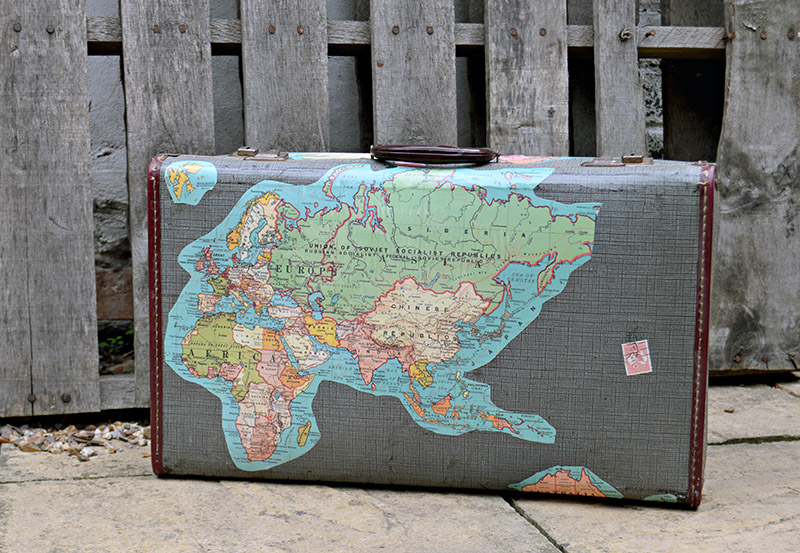Travel Tips
15 Student Budget Travel Tips
15 Student Budget Travel Tips
Published
8 years agoon
Travelling is a dream, more or less secret, for many students. They are growing up, becoming adults, and their unquenchable thirst for more knowledge is always hunting for new horizons. Encouraged by their study and by a huge travel literature, some students are eager for museums, exhibitions and cultural events, others are fascinated by remote mystical spots, others are compellingly attracted by extreme challenges.
Yet the goal of a journey is perhaps less important than the journey itself. “Travel doesn’t merely broaden the mind. It makes the mind” (Bruce Chatwin): exploring the world with an open mind and a positive attitude, getting in touch with far cultures and diverse people can really make your points of view more flexible and objective, even showing how life in your homeland, in your very hometown is just one of the countless possible way of living on this planet. Is one better than another? The more you travel, the less your judgements are conclusive.
How to plan a budget travel
Unfortunately, college and university years are often associated with an endemic lack of money and many travel wishes often turn in broken dreams. Yet traveling inexpensively is possible and several websites offer useful travel tips, sometimes very unusual, on how you can create a budget travel. A smart planning, moreover, can even allow you to earn money while fulfilling your dreams!
Hence take a seat, pen and paper, and let’s start defining the goals for your next trip!
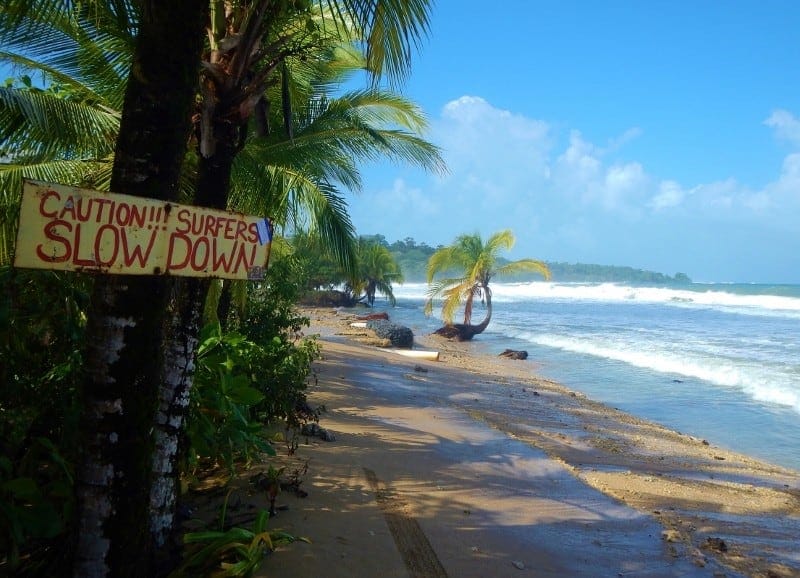
- Where, when, how much. Indeed, the basis for every travel! They should be planned together: the available budget and the travelling season influence the final decision on the target. There are many cheap travel destinations you can choose among, a bit off the beaten track maybe, but as charming and stunning as the most popular touristic spots.
- Be informed! Once you have set your destination, once you know by and large when you will travel, you should gather as many info as possible, starting with the main goal of your trip: an exceptional music festival, a couple of special archeological sites, an unspoiled natural area. From that starting gate, expand your search, read travel blogs and don’t be afraid to get in touch with more experienced senior travelers, they are usually very helpful and fond of useful tips.
- Flights and connections. Every airline has a travel planner showing the cheapest flights around a certain date. Just be careful and check the eventual coincidences with airport connections, trains and buses: sometimes low-cost flights force you to biblical and annoying waits.
- Be precise! Accuracy and punctuality are a must when travelling, particularly as regard airport procedures, check in, baggage drop-off etc. Precision is especially vital when you are abroad, perhaps in a non-English speaking country. I would also suggest to have a copy of your ID documents, as well as of air/bus/train tickets.
- Be unprecise! When visiting a town, a region or a country, you simply can’t see everything. I follow a very easy rule: besides a small numbers of spots, buildings, museums I really want to visit, I let my instinct guide me, choosing what to do on the basis of the available time, the weather and on my today mood and shape. It works! Travelling becomes more relaxing and enjoyable.
- Essential and unnecessary. Travelling light is warmly recommended. Write down a list of what should be included in your luggage and check it by and by before leaving, excluding each time everything that sounds superfluous. You can also google for some tips on how travel lightly. Remember to include a guide book in your list!
- Avoid tourist traps. Every touristic town has one or more areas packed with souvenir shops selling improbable typical handmade unique stuff. Such articles are also valuable, but with some patience and a pinch of luck, you can probably find some more authentic and less expensive objects.
- Look where the locals eat. Many travel sites suggest to cook your own food in order to lower the costs of your journey; sometimes, however, it is not possible, or you just want to taste the local food. In this case I recommend, again, to avoid places full of tourists, looking for some small, maybe hidden and not too glimmering restaurant instead: here you can usually experience the most authentic food of a region, for a fair price and with the right atmosphere!
- Avoid areas known to be dangerous. Unfortunately world is not a safe place. There are wars going on, tensions ready to explode at any moment, also every metropolis has areas with a high crime rate. Finding yourself in such areas can turn very expensive and dangerous. Travel safely is something not to bargain on, for you and for your family waiting at home.
- Written and unwritten rules. Every society has some unwritten standards of behavior, which can be very different from yours. Some observation before acting can be very rewarding: showing respect for the country you’re visiting immediately make people more friendly, which practically results in preferential and economically more advantageous dealings.
- Add some local flavor to your trip. Besides the touristic attractions, there are often minor events targeted to local people. A folk music festival or a jazz evening, for example, are cheap ways to dive into the local culture, also giving you the opportunity to meet actively with locals.
- Share your gifts and skills. Travelling means meeting new people and hopefully making new friends. Sharing your passions with them, for example by cooking some special recipes from your country, can be a good, economical and funny way to strengthen the friendship.
- Use technologies. The image of the Romantic traveler taking notes with ancient Roman ruins in the background is a long time gone memory. Nowadays we are dependent on technologies, and we can smartly use them to save money during our travels. Use Skype or WhatsApp to call home, possibly when a free WI-FI connection is available, or use some free online storage service to save your photos.
- Use your skills. A notebook, a connection to the internet and some special skills can even make you earn some money. There are several freelance jobs you can do while travelling, writing for example. Many website offers cheap paper writing service and are always looking for new talents.
- I wouldn’t say that smiling makes you directly save money, but a positive attitude to whatever happens when traveling is rewarding anyway: we go through a journey as we go through life, doing it with an open smile makes everything easier, funnier and lighter. So, why don’t smile?
This article was contributed by Robert Everett who is a freelance writer currently based in Chicago. Solving students career and university problems. Having interest in marketing and business.
This is a featured article by a Guest Author. Their details can be found in the post above. If you want to become a Guest Poster please Contact Us here. Please also read our Website Disclaimer if you have any issues or concerns.

You may like
Travel Tips
Why Bansko Europe is the Hidden Gem You Need to Visit This Year!
Published
1 week agoon
October 11, 2024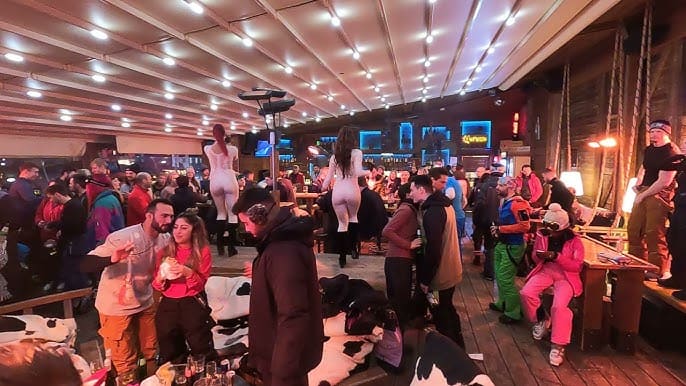
Looking for a destination that offers the best of both adventure and culture, all at affordable prices? Bansko Europe, might just be the perfect spot for you. Nestled in the Pirin Mountains of Bulgaria, Bansko has rapidly evolved into a year-round destination, offering world-class skiing in the winter, hiking and mountain biking in the summer, and a charming town rich with history. In this guide, we’ll take a deep dive into everything Bansko has to offer, including its outdoor activities, cultural experiences, dining options, accommodation, and travel tips.
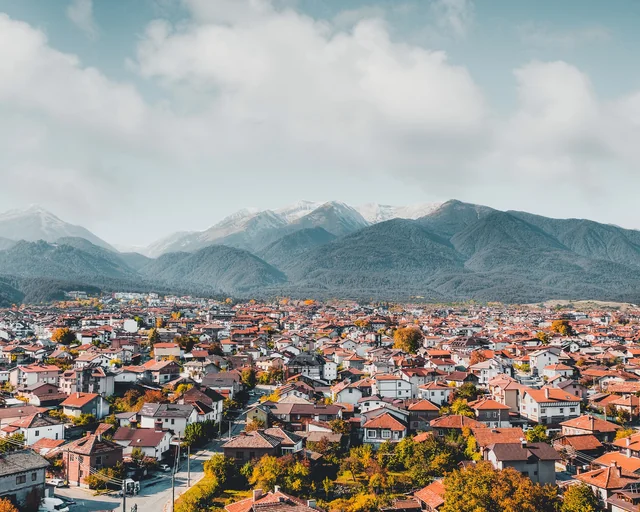
Why Visit Bansko?
Bansko combines the thrill of adventure sports with the charm of a traditional European town. Its ski slopes and hiking trails attract thrill-seekers, while its old town offers a glimpse into Bulgaria’s past. Whether you want to carve down the mountain on a snowboard, hike through the Pirin National Park, or enjoy a traditional Bulgarian meal at a local tavern (known as a mehana), Bansko is a diverse destination that suits all types of travelers.
What truly sets Bansko apart is its affordability. Compared to other European resorts, it offers the same quality of experiences without the hefty price tag, making it a perfect option for budget-conscious travelers.
Bansko as a Year-Round Destination
Winter in Bansko: Skiing and Snowboarding
Bansko, Europe is best known for its skiing and snowboarding scene. The ski resort boasts more than 75 kilometers of ski runs, with modern facilities that rival the more expensive resorts in the Alps. The season typically runs from December through April, with ample snowfall and well-maintained slopes. The resort has options for everyone, from beginner slopes to advanced black runs, ensuring that skiers of all levels will find something that suits them.
- Best Runs: The Todorka peak area has the longest runs, and its advanced slopes are perfect for experienced skiers. For beginners, the Chalin Valog offers gentler gradients, while Bunderishka Poliana is ideal for intermediates.
- Ski Passes: One of Bansko’s biggest draws is the affordability of its ski passes. You can purchase multi-day passes at far lower prices than in Western European ski resorts, making it a great destination for long-term travelers or families on vacation.
- Off-Piste and Freestyle: Bansko is also known for its off-piste skiing and snowboarding. There are freeride zones and even a snow park with jumps, rails, and boxes, perfect for those looking for a freestyle experience.
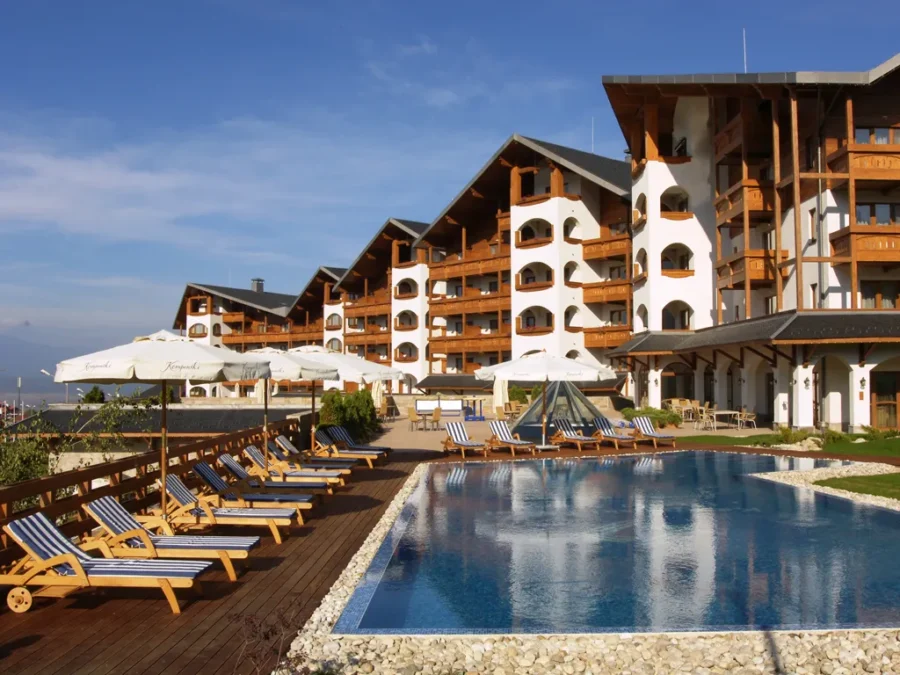
Summer in Bansko: Hiking, Biking, and Nature
During the warmer months, Bansko transforms into a summer paradise. Hiking and mountain biking in the Pirin Mountains are among the top activities, with scenic trails leading through pine forests, up rocky peaks, and past glacial lakes.
- Pirin National Park: A UNESCO World Heritage site, this park is home to over 70 glacial lakes and towering peaks like Vihren, which stands at 2,914 meters. Trails range from easy day hikes to challenging multi-day treks.
- Mountain Biking: Bansko has gained popularity among mountain bikers due to its well-marked trails and scenic routes. Whether you’re looking for a leisurely ride through the forest or a more challenging downhill experience, the Pirin Mountains offer a variety of trails.
- Rock Climbing and Adventure Sports: For adrenaline junkies, the region offers plenty of outdoor adventure options, including rock climbing, paragliding, and canyoning. You can book guided tours or rent equipment from local adventure companies in town.
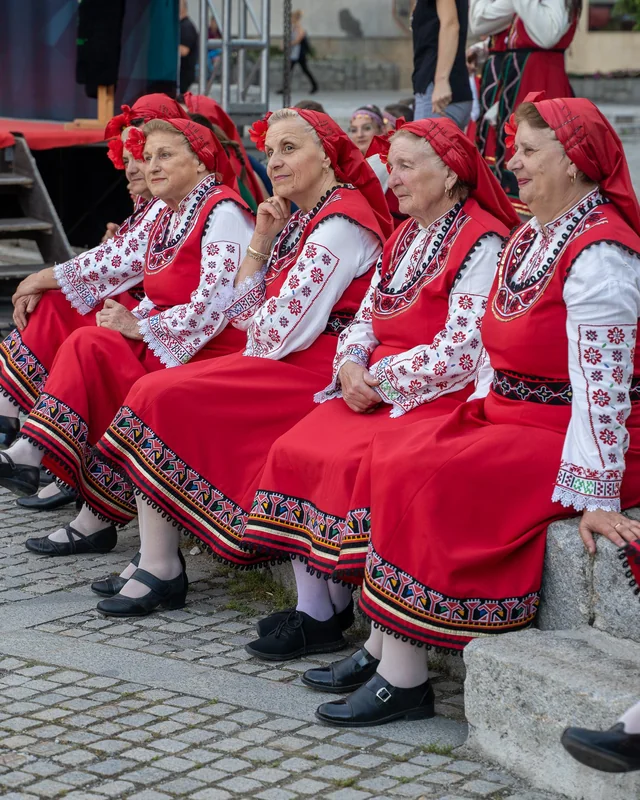
Cultural Experiences in Bansko
Beyond outdoor activities, Bansko offers a rich cultural experience. The town’s historic old quarter has preserved its traditional charm, with cobblestone streets, stone houses, and churches dating back centuries.
- Bansko Old Town: A stroll through Bansko Old Town will take you past traditional Bulgarian houses and mehanas, where you can enjoy local dishes like kavarma or banitsa. Make sure to visit the Neofit Rilski Museum, dedicated to the Bulgarian scholar who played a key role in the country’s national awakening.
- Church of the Holy Trinity: One of the most iconic landmarks in Bansko, this 19th-century Orthodox church is known for its beautiful frescoes and intricate wood carvings. It serves as a central hub for the town’s spiritual and cultural life.
- Festivals in Bansko: The town is also known for its vibrant festivals, including the Bansko Jazz Festival, which attracts international musicians every August, and the Bansko Film Fest, which celebrates outdoor and adventure films. These events bring a lively atmosphere to the town, making it a great time to visit for culture lovers.

Dining and Nightlife in Bansko
One of the highlights of visiting Bansko is the local cuisine, which combines rich Bulgarian flavors with hearty portions. The town is dotted with mehanas, traditional taverns that serve dishes like shishcheta (grilled meat skewers) and shopska salad (a fresh mix of tomatoes, cucumbers, and feta cheese).
- Top Mehanas: Mehana Dedo Tase and Kancheto are two of the most popular places to experience authentic Bulgarian food. Expect to be greeted by live folk music, roaring fireplaces, and warm hospitality.
- Modern Dining: While Bansko is steeped in tradition, it also caters to modern tastes. You’ll find contemporary restaurants serving international cuisine, including Italian, Mediterranean, and Asian dishes. Leonardo is a great spot for fine dining, offering everything from gourmet pizzas to seafood dishes.
- Nightlife: After a day on the slopes or the trails, Bansko’s nightlife scene heats up. The town is home to several bars and clubs, including the popular Happy End and Jack’s House, where tourists and locals alike gather to enjoy live music, dancing, and drinks.

Where to Stay in Bansko
Bansko offers a wide range of accommodation options to suit every traveler’s needs and budget. Whether you’re looking for a luxury experience, a family-friendly hotel, or a cozy guesthouse, the town has it all.
- Luxury Hotels: If you’re looking for high-end accommodation, the Kempinski Hotel Grand Arena offers five-star service, a spa, and unbeatable views of the slopes. Another top choice is the Premier Luxury Mountain Resort, which provides top-notch amenities, including gourmet restaurants and heated pools.
- Budget-Friendly Stays: For budget-conscious travelers, Pirin Lodge and Hotel Avalon are great choices. They offer comfortable rooms and easy access to both the ski lifts and hiking trails.
- Apartments and Chalets: If you’re traveling with family or a group, renting an apartment or chalet can provide a more flexible and cost-effective option. Platforms like Airbnb and Booking.com offer plenty of rentals, from cozy mountain cabins to modern apartments.
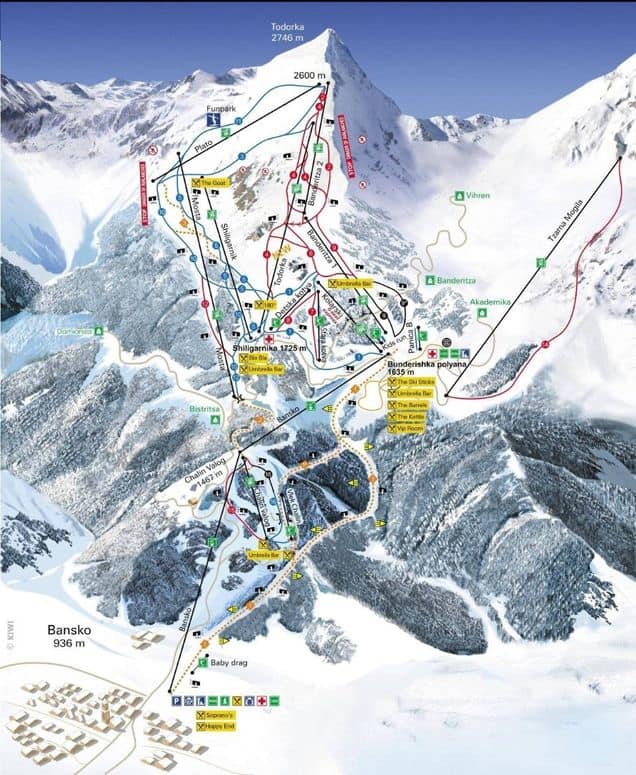
Getting to Bansko
Getting to Bansko, Europe, is fairly easy, with multiple transportation options available. The town is located roughly 160 km from Sofia, Bulgaria’s capital, which is the main entry point for most international travelers.
- By Car: Renting a car from Sofia Airport is the most convenient option, allowing you to make the two-hour drive to Bansko at your own pace. The route takes you through beautiful countryside and is straightforward, though snow chains may be required in winter.
- By Shuttle: Numerous companies offer shuttle services from Sofia to Bansko, which is an affordable and hassle-free option. These shuttles can be pre-booked online and typically operate year-round.
- By Train or Bus: While slower, taking the train or bus is another way to reach Bansko. Buses depart regularly from Sofia’s central bus station, with travel times around three hours. Trains offer a more scenic route but involve a longer journey, making them ideal for those looking to enjoy the scenery.
Final Tips for Visiting Bansko, Europe
- Currency: Bulgaria uses the Bulgarian Lev (BGN), so be sure to exchange currency or withdraw from ATMs in town. Credit cards are widely accepted in hotels and larger restaurants but always carry some cash for smaller establishments.
- Weather: Winters are cold and snowy, perfect for skiing, while summers are mild, ideal for outdoor activities like hiking. Be sure to pack appropriately for your chosen season.
- Language: While Bulgarian is the official language, English is widely spoken, especially in tourist areas like Bansko. Learning a few basic Bulgarian phrases can still enhance your experience.
Conclusion
Bansko Europe is the perfect mix of adventure, culture, and affordability. Whether you’re carving down the mountain in winter, hiking the Pirin Mountains in summer, or simply soaking up the town’s rich history, Bansko offers something for every traveler. Its blend of traditional charm and modern amenities makes it an ideal destination for anyone looking to escape the crowded tourist spots of Europe and discover something truly special. So, whether you’re a ski enthusiast, nature lover, or culture seeker, it’s time to pack your bags and explore Bansko—Europe’s best-kept secret!
Travel Tips
An Honest Review of My Stay at The Las Vegas Hilton at Resorts World
Published
2 weeks agoon
October 10, 2024
Each year, I make it a point to carve out some time from my busy schedule for a much-needed trip to Las Vegas. This year, I decided to stay at the Las Vegas Hilton at Resorts World, and let me tell you, it did not disappoint. From its luxurious design to the stellar service and plethora of activities, it was a getaway that perfectly balanced relaxation, excitement, and just the right touch of professionalism.

A Classy and Contemporary Stay
As soon as I walked into the Las Vegas Hilton at Resorts World, I was immediately struck by its sleek, modern aesthetic. The lobby is expansive, with a bright and airy atmosphere. The fusion of contemporary design with subtle hints of Las Vegas opulence gives the hotel a chic, welcoming vibe.
My room was nothing short of spectacular. Spacious, with floor-to-ceiling windows offering a stunning view of the Las Vegas Strip, it had every modern amenity I could ask for—plush bedding, a spacious bathroom with luxurious toiletries, and a state-of-the-art entertainment system. As a professional accustomed to frequent travel, I especially appreciated the ergonomic workspace. Whether I was catching up on emails or preparing for meetings, the in-room desk provided everything I needed.

Dining and Entertainment Options
Dining at the Las Vegas Hilton at Resorts World is an experience in itself. From upscale fine dining to quick bites, there’s something to satisfy every craving. On one of the nights, I indulged in a steak at Carversteak, a restaurant that had been highly recommended by a colleague. The meal was phenomenal—perfectly cooked with sides that complemented the dish in every way. For a more laid-back meal, I hit Famous Foods Street Eats on another evening. It offers a variety of global street foods, and it was fun to hop from stall to stall, sampling small dishes.
When it comes to evening entertainment, the options are endless. I caught a live show at the Theatre at Resorts World, where some of the top global acts perform. The show added just the right amount of thrill to the night.

Activities Within Walking Distance
Staying at the Las Vegas Hilton at Resorts World meant I was right at the heart of the action. Here are some great activities that were within walking distance:
1- The Fashion Show Mall
- Just a short stroll away, the Fashion Show Mall is one of the largest shopping destinations in Las Vegas. With more than 250 stores, it’s a paradise for any shopper. I found it to be a great way to unwind, especially after spending a few hours walking the Strip. There’s an excellent mix of high-end retailers like Neiman Marcus and more casual options, making it easy to find something for every occasion.
2-The Wynn Las Vegas and Encore
- These two luxurious hotels are nearby, and it’s worth visiting them just for the spectacle. With sprawling casino floors, world-class dining, and stunning botanical gardens, the Wynn and Encore have plenty to offer. Plus, if you enjoy a bit of high-end window shopping or some luxury gaming, these spots are ideal.
3-The LINQ Promenade
- If you’re in the mood for something a bit more relaxed, head over to the LINQ Promenade. It’s a vibrant outdoor shopping district where you can grab a bite, do some shopping, and even take a ride on the High Roller, which offers an unforgettable view of the Strip at night.

Sports Betting at Resorts World
One of the highlights of my trip, and something I always look forward to, is indulging in a bit of sports betting. The Las Vegas Hilton at Resorts World has a phenomenal sportsbook that makes this experience top-notch. Whether you’re a seasoned bettor or just looking to place a few casual bets, the sportsbook here caters to all levels of sports betting.
The venue features large LED screens showcasing all the major games and events, making it an ideal spot to catch the action. I spent a couple of afternoons here, watching NFL games, placing bets, and soaking in the electric atmosphere that only Vegas can offer. For those like me who love the thrill of sports betting, this spot doesn’t disappoint.
Not into traditional sports? No problem. The sportsbook also allows for a variety of other betting options, including MMA fights, tennis, and even golf tournaments. With so many options available, it’s easy to find something to pique your interest. The odds are competitive, and the staff at the sportsbook are helpful and ready to explain things to newcomers.
Additional Activities at the Las Vegas Hilton at Resorts World
Apart from sports betting, the Las Vegas Hilton at Resorts World offers several activities to keep you entertained. Their Zouk Nightclub is a hotspot for night owls, with world-renowned DJs spinning electrifying sets. If you’re into pool parties, don’t miss out on AyU Dayclub, where the poolside fun doesn’t stop until late into the evening.
For relaxation, the Resorts World Spa is a must-visit. I booked a deep tissue massage after a day of walking the Strip, and it was the perfect way to unwind and recharge for the rest of my trip. With modern treatment rooms and a menu full of rejuvenating therapies, it’s an oasis within the bustling city.
Conclusion: A Top Choice for Both Work and Play
For anyone looking for the perfect blend of business, leisure, and excitement, the Las Vegas Hilton at Resorts World is an unbeatable choice. Whether you’re visiting for work or pleasure (or both), this luxurious resort ensures your stay is comfortable, entertaining, and filled with possibilities. With great dining, a range of activities within walking distance, and of course, the thrill of sports betting, there’s truly something for everyone.
And for someone like me who enjoys returning year after year, it never fails to provide an exceptional Las Vegas experience that I can’t wait to replicate.
Travel Tips
8 Things to do in Bondi in Winter
8 Things to do in Bondi in Winter
Published
3 weeks agoon
September 29, 2024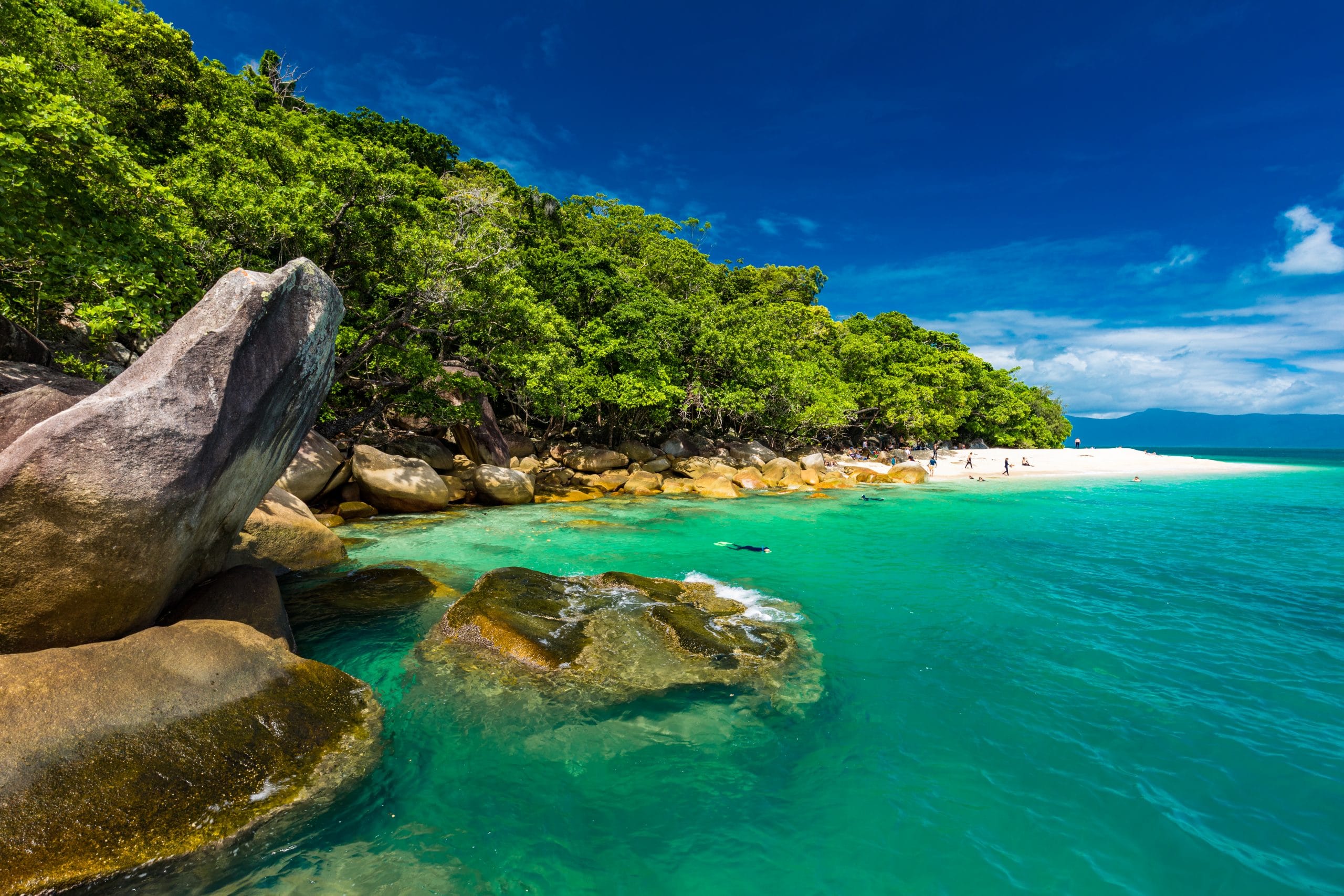
Bondi Beach is well-known for its vibrant atmosphere, surf culture, and sunny weather, but even when the temperatures drop from June to August, this iconic Sydney suburb offers plenty of attractions to explore. While you might not be lounging in the sun or catching waves, Bondi in winter has a charm of its own. From scenic coastal walks to indulgent food experiences, Bondi transforms into a cozy, relaxed destination perfect for exploring at a slower pace. Whether you’re into wellness retreats, cultural outings, or simply soaking in the picturesque winter scenery, Bondi still holds its appeal year-round. Here’s a guide to some of the best things you can do in Bondi during the colder months.
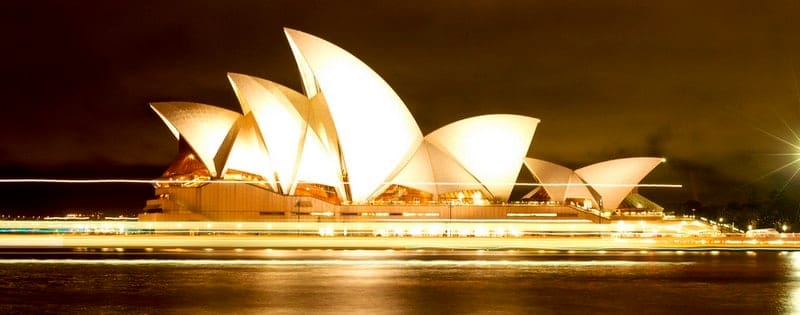
8 Things to do in Bondi in Winter
1. Go on an art tour
If the weather keeps you from enjoying Bondi’s famous outdoor activities, exploring the local art scene is a perfect alternative. Bondi boasts several high-quality galleries, each offering a unique window into Australia’s vibrant artistic culture. Start with the Cooee Aboriginal Art Gallery, one of Australia’s oldest Aboriginal-owned galleries, which showcases traditional and contemporary Indigenous artworks. With its mission to promote Indigenous art and culture, the gallery offers a rich selection of paintings, sculptures, and crafts from Aboriginal artists all across the country. Spend some time learning about the significance behind each piece, many of which tell stories of Indigenous history, spirituality, and connection to the land.
For a more hands-on experience, visit the Bondi Art Lounge, a welcoming space where you can view works by local artists or, better yet, join a class to create your own masterpiece. This gallery regularly offers art classes for beginners, so even if you’ve never painted before, it’s a fun way to get creative and connect with the local community. Bondi’s art scene continues to thrive year-round, and whether you’re an art enthusiast or a casual observer, spending time in these galleries can be an inspiring way to enjoy Bondi’s cultural side.
2. Take a Hike
Bondi’s stunning coastal scenery becomes even more refreshing in the cooler months, and there’s no better way to experience it than by embarking on a coastal hike. The Bondi to Coogee Walk is one of the most famous coastal trails in Sydney and for good reason. Stretching for 6 kilometers, this scenic trail offers breathtaking views of the Pacific Ocean, rugged cliffs, and secluded beaches along the way. The walk takes you through several of Sydney’s eastern suburbs, such as Tamarama, Bronte, and Clovelly, each with its own charm and inviting atmosphere.
The cooler temperatures during the winter months make this hike even more enjoyable, as you’re less likely to overheat, allowing you to take your time and soak in the views. Along the way, you’ll find plenty of opportunities to stop at cafes, kiosks, and restaurants, where you can relax and enjoy a coffee or snack with an ocean backdrop. Be sure to bring a camera, as you’ll pass plenty of photo-worthy spots, including Waverley Cemetery, one of the most scenic burial grounds in the world, perched on the cliffs above the sea. The Bondi to Coogee Walk is a must-do year-round, but the crisp, cool winter air adds a unique tranquility to this iconic hike.
If the weather doesn’t allow for the typical outdoorsy activities Bondi is known for, a tour of some of its first-rate art galleries can be a great way to spend an afternoon. Don’t miss the Cooee Aboriginal Art Gallery, dedicated to promoting Indigenous art, and the Bondi Art Lounge, where you can view works from local artists or even take a beginner class and create a masterpiece of your own.
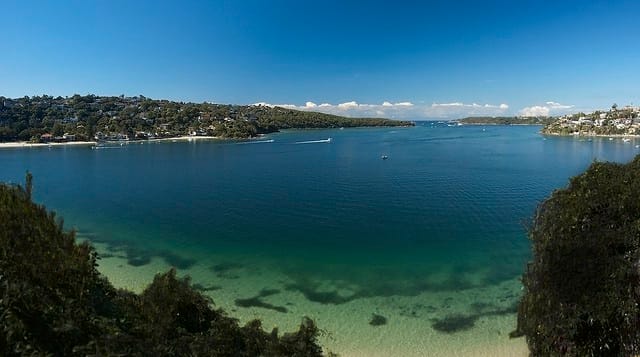
3. Head to Bondi Icebergs for Some Winter Swimming
Even during the colder months, swimming remains a quintessential Bondi experience, especially at the Bondi Icebergs Club, home to one of the most famous ocean pools in the world. Bondi Icebergs is open year-round, offering the unique experience of swimming in their picturesque Oceanside pool, with stunning views of the Pacific Ocean. What makes this spot particularly special during winter is its deep-rooted tradition of winter swimming, which has been a part of the club’s culture since 1929. Every Sunday from May to September, you’ll find the bravest swimmers taking part in this time-honored tradition, where members dive into the bracing waters despite the chilly conditions.
For those who are curious but not ready to commit to a full membership, non-members are welcome to join in the fun by paying a one-time entry fee, granting access to both the pool and the sauna. The cold plunge, followed by the warmth of the sauna, is invigorating and offers a rewarding challenge that many swimmers look forward to each winter. The view alone—swimming with the backdrop of crashing waves and the cliffs of Bondi—is worth the experience.
But the Bondi Icebergs isn’t just for athletes; it’s a place where locals and visitors alike come to enjoy the relaxed atmosphere, grab a meal at the Icebergs Bistro, or simply enjoy the winter sunshine while watching the ocean swell. If you’re not quite ready to brave the cold waters, you can still enjoy the social aspect of this iconic venue and soak in the panoramic views from the safety of the heated indoor spaces.
4. Strap on your skates and visit the only beachside skating rink in Australia
If winter swimming is a step too far for you, why not skate instead? Bondi has Australia’s only beachside ice rink, and the ocean view in the background makes for a striking contrast. The ice rink is open from June 27 to July 13, and aside from hosting skating sessions that are open to the public, it also features spectacular ice shows from Stars On Ice.
5. Settle in for brunch at one of Bondi’s decadent cafes
Winter wouldn’t be the same without a few indulgences, and after all your skating and hiking, you’ve probably earned a hearty brunch anyway. Fortunately, Bondi is full of great brunch options, from Trio Café with delicacies like poached eggs with truffle oil and char-grilled halloumi; to the rustic Brown Sugar, where you can indulge in classic comfort food like buttermilk pancakes and English muffins with bacon.
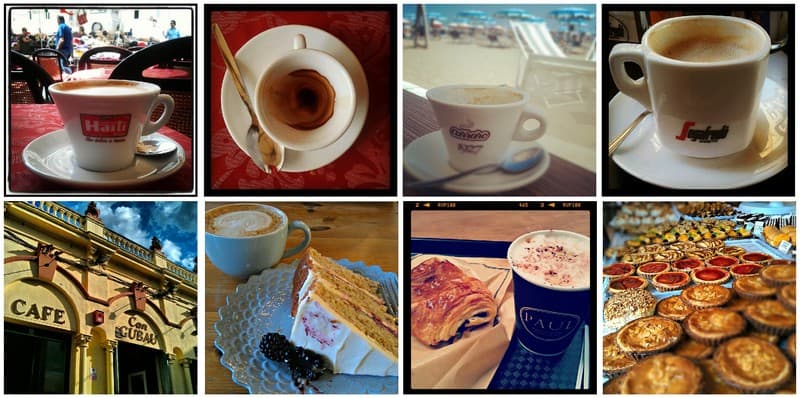
6. Join a cooking class, dodge ball game, or salsa lesson
During the winter, it may seem like most people have gone off to hibernate, but if you know where to look, you can still find plenty of social things to do. Start by checking out the Bondi community page on Gumtree. You can find like-minded individuals to explore the area with or even join a group for fun activities like hiking, biking, or cooking.
7. Score some vintage fashion at Bondi Markets
The Bondi Markets, held every Sunday on Bondi Beach, are known in Sydney for being the best place to shop for vintage clothing and accessories and hip new fashions from emerging designers. Aside from style, you can also shop for art, furniture, flowers, books, local produce, and delicious street eats. Even if you don’t buy anything, it’s a great place to do some people-watching and see the Bondi locals in their element.
8. Stop by the Bondi Pavilion
The Bondi Pavilion is one of the suburb’s oldest landmarks dating back to 1928 when it first opened, featuring grand dining rooms, a lounge, a ballroom, and the Turkish and Hot Sea Water Baths. Today, it’s used as an art and cultural center and is home to a theatre group, recording studio, and art gallery. There’s always something going on here, from pottery classes to festivals to open-air cinemas, so check it out if you have a chance.
Conclusion: Winter in Bondi—A Different Kind of Magic
While Bondi Beach is typically associated with summer sun, surfing, and crowds of tourists, winter brings a unique charm to this iconic Sydney destination. As the pace slows and the air cools, Bondi offers an opportunity to experience the suburb in a new way—one that’s relaxed, refreshing, and undeniably inviting. Whether you’re delving into the local art scene, taking in the breathtaking coastal views on a hike, or braving the invigorating waters of Bondi Icebergs, there’s no shortage of ways to enjoy Bondi during the colder months.
From indulging in hearty brunches at cozy cafes to strapping on skates at the beachfront ice rink, winter allows locals and visitors alike to engage in activities that bring a sense of warmth and community. The Bondi Markets and the historic Bondi Pavilion continue to thrive, offering vibrant spaces for culture, fashion, and entertainment. And with winter events like cooking classes and salsa lessons, there are plenty of social activities to keep you connected with others while you explore the best of Bondi in its quieter season.
Bondi in winter may be different, but it’s far from dull. Whether you’re seeking adventure or relaxation, there’s something for everyone. So, if you find yourself in Sydney’s most popular suburb between June and August, take the chance to explore Bondi’s winter magic—you won’t be disappointed!
Meet Cole and Adela
 We have been wearing out our jandals (Kiwi for flip-flops) on our travel adventures around the world since 2009. We think our blog is thought provoking and a little witty. But we have been proven wrong before. Find out more about us here...
We have been wearing out our jandals (Kiwi for flip-flops) on our travel adventures around the world since 2009. We think our blog is thought provoking and a little witty. But we have been proven wrong before. Find out more about us here...
Find
New on Four Jandals
- The 9 Hidden Drawbacks of Using Outdoor Digital Signage October 19, 2024
- The 5 Challenges of Using Digital Display Signage for Advertising October 19, 2024
- 5 Reasons Wayfinding Kiosks Are Obsolete for DMOs October 17, 2024
What Are You Looking For?
- Adventure Travel (236)
- Africa (25)
- Asia (31)
- Auto (2)
- Business (5)
- City Guides (26)
- Entertainment (7)
- Europe (178)
- Food (16)
- Health (8)
- Home (4)
- Inspiration (12)
- North America (51)
- Oceania (32)
- Other (218)
- Personal Musings (9)
- Reviews (16)
- Technology (13)
- Travel Blogging Tips (9)
- Travel Tips (285)
- Work (3)
See Our Favorite Topics
-

 Africa1 month ago
Africa1 month agoBasic Arabic Words for Travel to Egypt
-
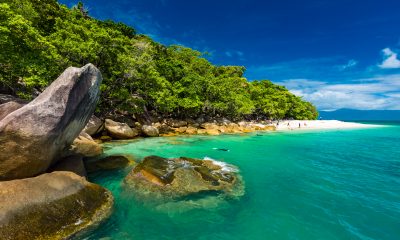
 Travel Tips3 weeks ago
Travel Tips3 weeks ago8 Things to do in Bondi in Winter
-

 Health2 months ago
Health2 months agoHow to Create Memorable First Dates as Tourists in a New City
-

 Europe4 weeks ago
Europe4 weeks agoDiscover Sicily’s Hidden Charms: Why Villa Holidays Are the Ultimate Getaway
-

 Adventure Travel3 weeks ago
Adventure Travel3 weeks agoHonest Review of New Jersey Island Beach State Park
-

 Travel Tips1 week ago
Travel Tips1 week agoWhy Bansko Europe is the Hidden Gem You Need to Visit This Year!
-

 Travel Tips2 weeks ago
Travel Tips2 weeks agoAn Honest Review of My Stay at The Las Vegas Hilton at Resorts World
-

 Technology6 days ago
Technology6 days agoThe Rapid Rise of Online Casinos: Why Digital Gambling is Taking Over
